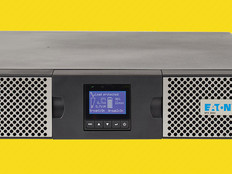How to Achieve Document Management Success with ERM Systems
There's at least one sure way of knowing that you have a records management problem at your agency: when the Occupational Safety and Health Administration feels compelled to rule on your tidal wave of paper files.
There's at least one sure way of knowing that you have a records management problem at your agency: when the Occupational Safety and Health Administration feels compelled to rule on your tidal wave of paper files.
"At our Chicago office, all the paper in our file room had become overwhelming," says Daniel Rainey, chief of staff at the National Mediation Board, an independent agency that oversees labor disputes in the rail and airline industries. The resulting OSHA violation spurred the agency, in 2005, to start work on an electronic records management (ERM) system.
In Kansas City, Mo., at the operations center of the Agriculture Department's Risk Management Agency, officials didn't need OSHA to tell them that the paper records they were storing throughout the city — some dating back 40 years — were a problem. "And we were still getting requests for more filing cabinets," says Rodger Matthews, RMA's associate deputy administrator for product management. RMA, which manages the Federal Crop Insurance Corp., launched its e-records initiative in 2003 and hired dedicated records managers in 2006.
Both programs have come a long way in the ensuing years. In May, each was recognized by the Archivist of the United States for outstanding achievements in records management.
"Agencies in general are going to learn a lot about electronic records management from smaller agencies, though we're seeing pockets of success at larger agencies, too," says Paul Wester, director of the Modern Records Program at the National Archives and Records Administration (NARA). "E-records can be easier to do on a smaller scale because of the scope of the agencies' missions and more manageable governance issues."
And though both NMB and RMA have the same goal of creating near-paperless offices, the routes they've chosen to reach that end are different. NMB opted for a hosted solution; RMA installed an off-the-shelf system.
Open Government, Open Records
"Historically, despite the requirements of the Federal Records Act, records management has received low priority within the federal government," says Adelaide O'Brien, research director at IDC Government Insights. "Open government initiatives have helped push agencies into sharing information electronically through flagship initiatives because the Office of Management and Budget makes a direct link between open government and records management."
NMB built a two-part system. The first module, the Knowledge Store, houses a public-facing database of searchable records. The second is the Corporate Memory System, an internal, password-protected records management system. Both are built on a Microsoft Windows ServerÂbased software platform designed for museums, libraries and archives.
The ERM system, including the data store, runs on servers in Vancouver, British Columbia. NMB employees run a Microsoft Vista client that lets them file documents in the hosted database. When they select a folder in which to store a document, based on policies handed down by NMB management, the system automatically knows to assign the proper retention schedule to that particular document.
"When you drop something into the Corporate Memory System, for example, you put a title on it based on a protocol we've established," Rainey says. "That creates some of the metadata associated with the file." Users can also add metadata.
"Our original intent was to buy the software and run it ourselves," Rainey says. "But it would have cost us a quarter-million dollars the first year." For a 50-person agency, that price tag was too high. So NMB worked out a licensing deal under which a third-party consultant would offer NMB the software as a service.
Since the system came online, NMB has ceased generating internal paper records. "We still get some hard copies from mediation parties, but that's going away, too," Rainey says. When the agency does receive paper records — and throughout the process of archiving its existing records — employees use standard scanners to capture the records, creating both a PDF file and a text-searchable, optical character recognition version.
Now NMB is working with NARA to turn over its e-records on an agreed-upon schedule. The challenge, says Charles Montague, an NMB program analyst working on the system, is that if the agency turns over files in their native format, those formats will
inevitably change.
"We're already forwarding sample documents to NARA so they're aware of the formats we have," Montague says. According to Rainey, NARA plans to write its standards for e-record formats based on its experience with NMB.
95%
Federal agencies at high to moderate risk of compromising integrity, authenticity and reliability of their records
SOURCE: 2010 National Archives and Records Administration assessment
Moving Toward Paperless
At USDA's Risk Management Agency, records managers have rid themselves of at least 40 filing cabinets' worth of paper documents by deploying an army of Canon DR-4010c scanners to 16 regional offices and implementing an in-house records management system. The ERM itself is built on Microsoft SharePoint, which the agency uses nearly as is with very little custom programming, says Erin Tecce, RMA's records officer.
"The SharePoint records center didn't work for us off-the-shelf, so we had to design our own retention module," she says.
The agency uses document management software as a front end to its SharePoint system. Every computer has a software license, and every scanner uses the software for filing records in the system. There's also a web client for submitting documents through a secure browser and a Microsoft Outlook plug-in so employees can save e-mails directly into the SharePoint ERM.
Scanned images are filed as PDFs, and then processed to comply with Section 508 standards for accessibility. The e-records themselves are stored in a Microsoft SQL database, which Tecce says is up to 97 gigabytes and holds more than 60,000 e-records so far. "We're finishing off all our paper records first, but the end goal is to go completely paperless," she says.








